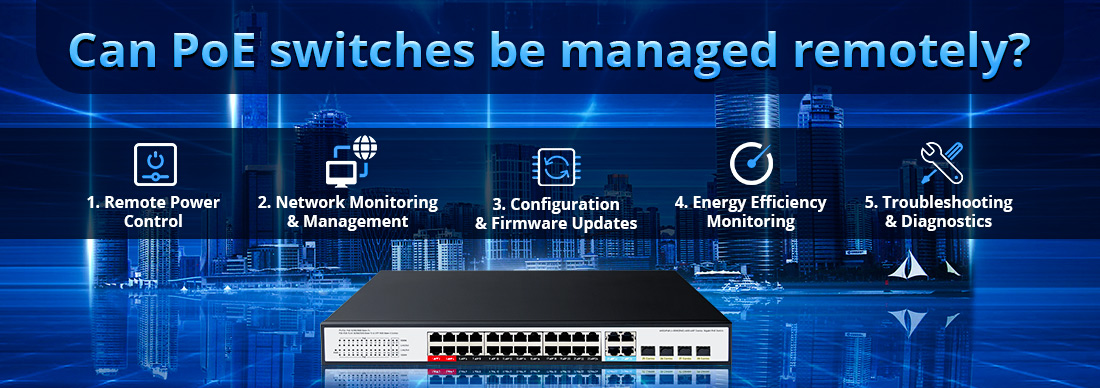
Yes, PoE (Power over Ethernet) switches can be managed remotely, especially if they are managed switches. This capability is one of the major benefits of using L3 Industrial 16 Port PoE Managed Switch in network infrastructures, including IoT and enterprise applications. Here’s how it works and the benefits it provides:
1. Remote Power Control
Turning Devices On/Off: 16 Port Gigabit Managed Ethernet Switch with 2 SFP allow IT administrators to remotely turn on or off the power supply to individual devices. This is useful for rebooting devices like IP cameras, wireless access points, or IoT sensors without needing to physically access the site.
Scheduling Power: Some switches allow power scheduling, where devices can be automatically powered on or off at certain times, optimizing energy consumption.
2. Network Monitoring & Management
Device Monitoring: Managed PoE switches provide real-time monitoring of connected devices, including data traffic, power consumption, and port status. This helps identify issues or inefficiencies in the network.
Performance Management: Administrators can monitor the performance of each port and adjust settings to ensure optimal data flow. This can include prioritizing traffic for critical devices or applications.
Security Management: Remote access enables the management of security features like VLANs, firewalls, and access controls to protect the network from unauthorized devices or breaches.
3. Configuration & Firmware Updates
Remote Configuration: Settings like IP addresses, VLANs, and traffic rules can be configured remotely without requiring physical access to the switch. This is particularly useful for large or distributed networks.
Firmware Updates: Managed PoE switches can be updated remotely with the latest firmware to enhance performance, patch vulnerabilities, or introduce new features.
4. Energy Efficiency Monitoring
Power Consumption Control: Managed switches allow detailed insights into the power usage of each connected device. Administrators can optimize power distribution based on device requirements, ensuring efficient energy use.
Power Budgeting: PoE switches typically have a power budget, and remote management allows you to control and allocate power to various devices based on their needs, avoiding overload or inefficiencies.
5. Troubleshooting & Diagnostics
Remote Troubleshooting: If an IoT device or other powered device stops working, administrators can run diagnostics remotely to check network or power issues. They can reset ports, check data flows, and isolate problems without needing to visit the site.
Alerts & Notifications: Managed PoE switches can send alerts for issues such as power failures, port malfunctions, or unauthorized devices. This proactive management reduces downtime.
Common Use Cases:
Smart Cities & Buildings: In large infrastructures like smart cities or intelligent buildings, IT teams can manage PoE switches from a central location, minimizing the need for on-site visits to maintain or update devices.
Remote Locations: For PoE devices deployed in hard-to-reach or distant locations, remote management drastically reduces operational costs by eliminating frequent site visits.
In summary, 16 Port Gigabit Managed Ethernet Switch OEM offer full remote management capabilities, making them ideal for efficiently managing distributed networks and powering critical IoT devices while ensuring reliability, security, and operational efficiency.